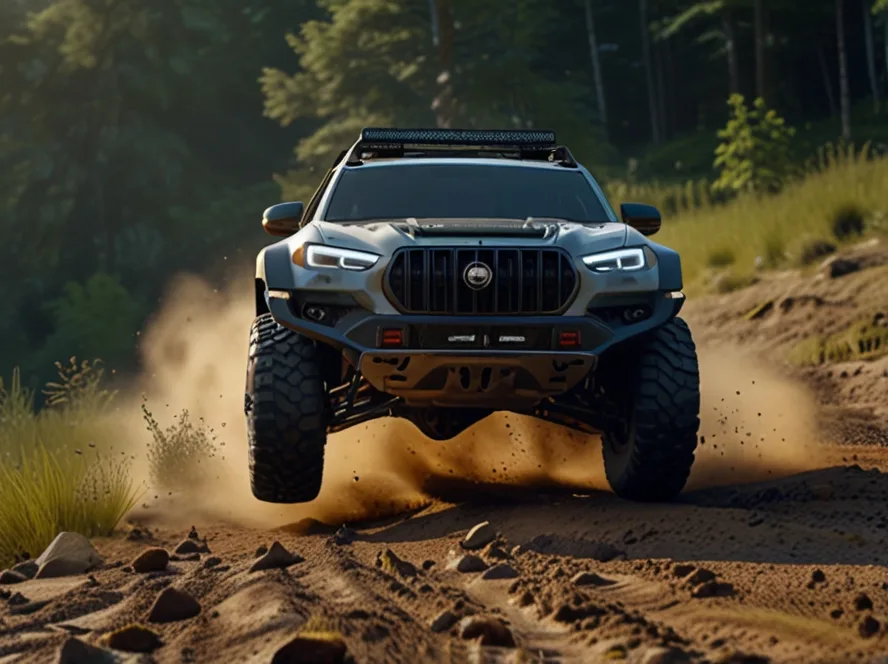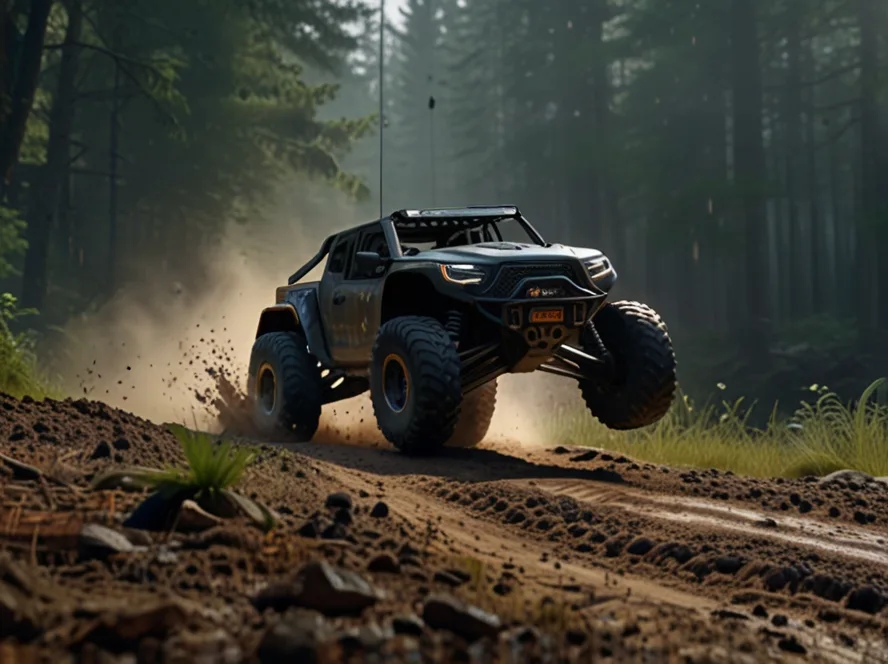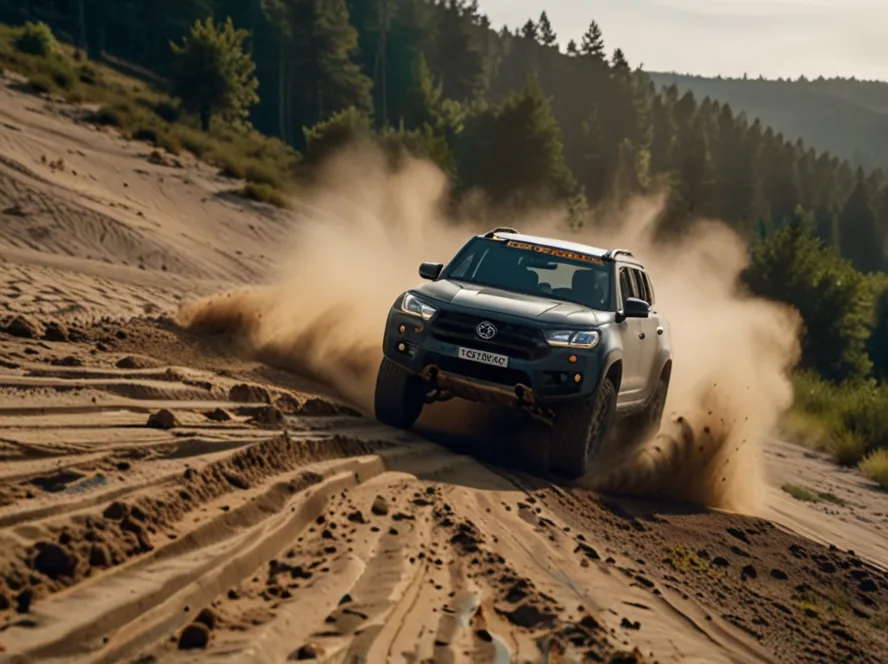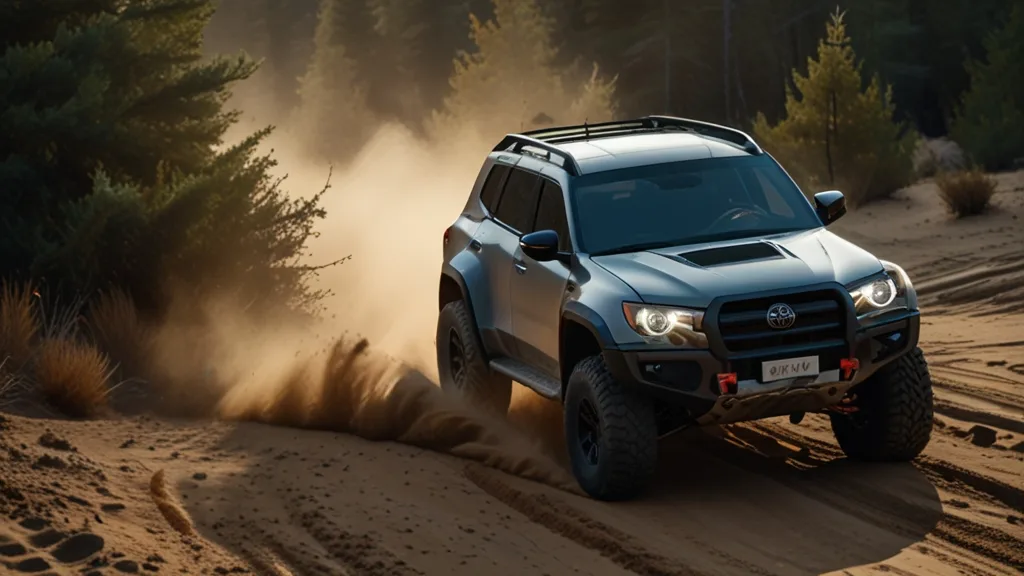Safe off-roading practices include staying on designated trails and maintaining a low speed. It’s essential to keep your vehicle under control and respect the environment.
Entering the realm of off-roading, enthusiasts rapidly learn that this thrilling activity demands a deep respect for nature and meticulous preparation. Safety starts well before hitting the trail; equipping your vehicle with necessary gear, planning your route, and understanding the terrain are fundamental steps to secure a positive experience.
Each off-roading trip presents unique challenges, from navigating obstacles to adjusting tire pressure for different terrains. Essentially, the goal is to explore without leaving a negative impact. This requires a blend of skillful driving, situational awareness, and a conservationist mindset. By practicing these core principles, off-roaders can enjoy the rugged outdoors while preserving it for future adventurers.

The Essentials Of Off-roading Safety
Embarking on an off-road adventure? Safety must come first. Tackling rough terrain brings thrills and risks. Knowing the essentials of off-road safety ensures fun without harm. Gear up correctly and check your vehicle diligently.
Gear Up With The Right Equipment
Proper equipment is crucial for a safe off-roading experience. Ensure you pack these necessities:
- Recovery Kit – Includes a shovel, winch, and tow straps.
- First Aid Kit – Packed with essentials for medical emergencies.
- Navigation Tools – GPS and maps for reliable route planning.
- Communication Devices – Keep in touch with your group or for help.
- Air Compressor – For adjusting tire pressure to suit terrain changes.
- Extra Water and Food – Stay hydrated and energized.
Vehicle Checklist Before Hitting The Trail
Before hitting the trail, perform a thorough vehicle inspection. Never overlook this step. Check these key areas:
| Tires | Lights | Fluids | Battery | Brakes |
|---|---|---|---|---|
| Proper inflation and tread | All working without faults | Engine oil, coolant, and brake fluid | Fully charged and secure | Responsive and pads in good condition |
Address these and you’re one step closer to a secure off-road trip. Bring tools for quick fixes. Double-check all gear and leave nothing to chance.

Skills You Need On Rough Terrain
Embarking on an off-road adventure demands more than sheer courage and a robust vehicle. The shifting sands, steep inclines, and rocky paths you’ll encounter require specific skills on rough terrain. Whether navigating through a narrow forest trail or conquering a mountainous route, the skills to tackle these challenges are vital.
Navigating Obstacles: Tips And Techniques
Confronting obstacles off-road is inevitable. Mastery over these hurdles is a blend of technique and foresight. Here are step-by-step tips:
- Inspect the obstacle. Exit your vehicle if necessary.
- Choose the right gear. Low gears can offer better control.
- Approach slowly. Momentum is your friend, but control is king.
- Angle your approach. Tackle one tire at a time when possible.
- Use a spotter. They can guide you from outside the vehicle.
- Be ready to stop. If you feel unsure, pause and reassess.
Recovery Procedures To Get Unstuck
Even the most experienced off-roaders can find themselves in a bind. Recovery knowledge is essential. Follow these techniques:
| Technique | Description |
|---|---|
| Traction Mats | Place them under your tires to gain grip. |
| Winching | Connect your winch to a secure object and pull. |
| Shoveling | Remove excess dirt or sand around the tires. |
| Rocking | Shift between forward and reverse to wiggle free. |
Remember to pack the necessary recovery gear before heading out. This includes traction mats, shovels, winches, and recovery straps. Practice these procedures to ensure readiness when stuck.
Navigating Natural Terrain Responsibly
Exploring the great outdoors by off-road vehicles can be thrilling. Adventures take you to untouched spots. Objective: leave no trace. Understand how to tread lightly on natural terrains. Let’s dive into responsible off-roading practices.
Minimizing Environmental Impact
Your off-road trips should not harm our planet. Follow these steps to minimize footprint.
- Stay on Designated Trails: Stick to marked paths to protect untouched land.
- Avoid Sensitive Areas: Wetlands and meadows are no-go zones.
- Control Erosion: Don’t contribute to soil degradation.
- Leave No Trash: Whatever comes with you leaves with you.
Respecting Wildlife And Natural Habitats
Native fauna deserves respect. Here’s how to enjoy wildlife without disruption.
- Keep Distance: Do not disturb animals. Watch from afar.
- Quiet Please: Loud noise can frighten or stress animals.
- No Feeding: Human food can harm wildlife. Don’t offer it.
- Stay Informed: Know about local wildlife. Plan to avoid issues.
Group Dynamics In Off-roading
Group Dynamics in Off-Roading set the stage for a thrilling experience. Off-roading with friends boosts the fun. But demands safety. A well-knit group ensures safety, maximizes enjoyment, and tackles challenges together. Let’s dive into their key roles.
Effective Communication Amongst Drivers
Crucial updates flow smoothly in groups with strong communication. It prevents mishaps. Drivers must stay in touch. Use of handheld radios is common. They’re easy to use. Check everyone’s device before heading out. Clear instructions and updates about the trail ensure group safety.
- Discuss signals for turns, stops, and hazards ahead of time.
- Designate a lead and tail vehicle. They guide the crew and ensure no one’s left behind.
- Practice the “repeat back” method. Confirming received messages avoids misunderstandings.
Planning And Coordination For Group Rides
Successful off-road adventures need planning. Coordination keeps the group on the same page. Discuss the trail. Agree on breaks. Establish a comfortable pace for all vehicles.
| Role | Responsibility |
|---|---|
| Leader | Guides group, sets pace, and navigates. |
| Sweeper | Follows last, ensures no one falls behind. |
Plan for contingencies. Vehicle breakdowns or injuries can occur. Carry a first aid kit and repair tools. Share a list of emergency items each vehicle should have.
- Agree on a rendezvous point in case of separation.
- Assign specific tasks to members. For example, navigation, recovery management, or first aid awareness.
- Set rules for group conduct. Respect the environment and other trail users.
Handling Emergencies Off The Beaten Path
Exploring rugged terrains brings adventure to new heights. Yet danger lurks beyond each turn.
Preparedness becomes your companion. Crush calamities with knowledge and the right gear.
First Aid Preparedness
Never venture out without a first aid kit. It’s essential. Every adventurer’s pack should have one. Tailor the contents to address common off-road injuries. Here’s what to pack:
- Bandages and gauze pads: For cuts and scrapes.
- Medical tape: To secure the gauze in place.
- Antiseptic wipes and creams: To disinfect wounds.
- Pain relievers: To alleviate discomfort.
- Scissors and tweezers: For trimming bandages and removing splinters.
- Elastic wraps: To support sprained joints.
- Thermal blankets: To preserve body heat in cold climates.
- Emergency contact card: Details of whom to call in a crisis.
Knowledge also saves lives. Take a basic first aid course before you head out. Know how to use each item in your kit.
Strategies For Emergency Situations
Stay calm and think straight during emergencies. Panic can make things worse. Follow these strategies to get through tough times:
| Emergency Type | Action Plan |
|---|---|
| Injury | Use your first aid kit. Call for help if needed. |
| Vehicle Breakdown | Set up signal lights. Try to troubleshoot. Contact roadside assistance. |
| Getting Lost | Use GPS or compass. Stay on track by marking the path. |
| Weather Hazard | Seek shelter immediately. Have a plan before you venture out. |
Always let someone know your plans. It helps rescue teams find you if you don’t return on time.
Bring a reliable communication device. Ensure it functions in the area you’ll explore. Satellite phones or radios can be life savers.
Training, gear, and knowledge team up to conquer off-road perils. Face the wild with confidence and care for nature and yourself.
Staying Legal And Ethical Off-road
Embracing the thrill of off-roading calls for responsibility. You must comply with laws and respect nature. This means staying legal and ethical while navigating through rugged landscapes.
Knowing The Local Off-roading Laws
Before you set off, it’s crucial to understand local regulations. Not every trail is open to off-roaders. Secure permits if required. This helps protect natural habitats and ensures access to off-roading sites in the future.
Check online resources or contact local authorities for up-to-date information. Different areas have unique rules. Some may restrict vehicle types. Others enforce seasonal closures to protect wildlife.
Trail Etiquette Every Off-roader Should Follow
Respect the trail and fellow off-roaders. Follow these simple rules:
- Stay on marked paths to avoid damaging the ecosystem.
- Yield to uphill traffic. It’s harder to regain momentum when going uphill.
- Leave no trace. Take all your trash with you.
- Offer assistance to fellow off-roaders in need.
- Respect wildlife and their habitats.
- Keep noise levels down. Excessive noise disturbs animals and other visitors.
Mindful behavior sets a positive example. It ensures that trails remain open and enjoyable for everyone.

Frequently Asked Questions Of Safe Off-roading Practices
What Is Safe Off-roading?
Safe off-roading refers to practicing responsible and cautious driving techniques while traversing rough and off-road terrains. It involves adhering to specific guidelines, like vehicle preparation, understanding terrain, and respecting the environment to ensure safety for both the driver and the natural surroundings.
How Should You Prepare Your Vehicle?
Before embarking on an off-road adventure, ensure your vehicle is well-maintained. Check fluid levels, tire pressure, brakes, and suspension. Equip your vehicle with off-road suitable tires, recovery tools, and ensure that all safety features are operational.
What Gear Should You Bring For Off-roading?
For a safe off-roading experience, pack essential gear including a first-aid kit, recovery equipment, spare tire, GPS or map, plenty of water, and food. It’s also wise to carry a tire repair kit, winch, and communication devices in case of emergencies.
Can Off-roading Affect The Environment?
Yes, off-roading can impact the environment negatively if not done responsibly. To minimize harm, stick to established trails, avoid sensitive ecosystems, and practice “tread lightly” principles. This includes not littering, disturbing wildlife, or causing unnecessary damage to flora.
Conclusion
Embarking on off-road adventures can be exhilarating, with the right approach ensuring safety and fun. Remember, proper preparation, vehicle maintenance, and respectful trail use are key. By embracing these safe off-roading techniques, you’ll secure enjoyable expeditions for years to come.
Stay safe, explore responsibly, and treasure the trails.


